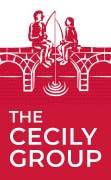
The Architecture of a Legacy
When Giorgio Armani passed away at 91 in September 2025, the plan he had designed nearly a decade earlier came into effect with quiet precision.
It was the culmination of years of preparation: a founder’s final act of authorship, intended to secure independence, protect the brand’s identity, and prevent the conflicts that have undone other luxury dynasties.
Armani’s succession plan offers a valuable case study in the intersection of governance, control, and legacy. It demonstrates how legal architecture can safeguard a founder’s vision, and why, in doing so, it must also leave room for evolution.
The Structure of the Succession
Armani’s 2016 bylaws outlined a detailed roadmap for the future of the Armani Group that combined protection with pragmatism. Six heirs were named: his sister Rosanna, nieces Silvana and Roberta Armani, nephew Andrea Camerana, longtime collaborator Pantaleo “Leo” Dell’Orco, and the Giorgio Armani Foundation.
Control of the company’s voting rights was deliberately distributed: 40% to Dell’Orco, 30% to the Foundation, and the remaining shares to family members with limited voting power. The Foundation — now chaired by Dell’Orco — was created to safeguard Armani’s principles, maintain continuity, and prevent hostile takeovers or premature listings. Its governance role gives it permanent influence over key creative and strategic decisions.
In his final will, Armani added another dimension: a sequenced ownership transition. According to Reuters and The Guardian, he instructed that a 15% stake be sold within 18 months of his death, followed by an additional 30% to 54.9% within five years, with preference given to trusted partners such as LVMH, L’Oréal, or EssilorLuxottica. An initial public offering could also be considered as an alternative, provided the process upheld the brand’s integrity.
At the same time, he ruled that the Fondazione Giorgio Armani must always retain at least 30% ownership, ensuring it remains the moral and structural guardian of his vision. The Foundation’s charter declares it a “permanent guarantor of compliance with the founding principles,” giving it enduring authority even as capital structures evolve.
Taken together, these instructions show that Armani’s goal was not to freeze the company in private ownership indefinitely, but to engineer its independence by balancing the brand’s creative soul with the flexibility needed to adapt.
Strength Through Restraint
The Armani Group remains one of the few major luxury houses still privately held, with revenues around €2.3 billion and a valuation exceeding €5 billion.
Independence was always central to Armani’s philosophy — what he once called “an essential value.” For decades, he declined offers from luxury conglomerates, believing that creative freedom depended on corporate autonomy.
Yet, the final version of his succession plan reveals a more nuanced understanding of independence. Armani recognised that permanence and adaptability must coexist. His will allows for partial sales or an IPO, but under strict sequencing, trusted partnerships, and perpetual moral oversight by the Foundation.
In this context, the 30% minimum ownership clause secures ethical control. The Foundation’s influence comes not from majority shareholding but from governance rights: board representation, voting privileges, and the authority to safeguard creative direction and brand purpose. Armani’s structure mirrors models such as the Hermès family holding or the Tata Trusts, where mission-based ownership ensures long-term integrity. The Foundation’s role is not to manage the business day-to-day, but to set the boundaries of identity and decide on what the brand represents.
Armani also made his values explicit. According to publicly reported extracts of his will, he instructed that the company should be managed ethically, with moral integrity and fairness, emphasised the pursuit of an essential, modern, elegant and non-ostentatious style, and required attention to innovation, excellence, quality, and product refinement.
This combination of moral language and structural design reflects Armani’s awareness that total independence without transition can lead to fragility. He was designing for a world without himself, where structure would preserve both autonomy and continuity.
A Holistic View
Through a holistic lens, Armani’s design reflects intentional balance across the four Abundances: Wealth, Relationships, Time, and Purpose.
- Wealth was structured for preservation and reinvestment rather than personal consumption, ensuring the company’s autonomy but reducing liquidity flexibility.
- Relationships were deliberately broadened beyond kinship. By including trusted collaborators alongside family, Armani mitigated rivalry. Still, future heirs may struggle to assert agency within such a tight circle.
- Time was Armani’s greatest advantage: he planned early and phased transition gradually. But the same pacing could, over time, slow necessary renewal.
- Purpose was formalised through the Foundation, codifying the brand’s understated essence. Its challenge will be to interpret that ethos in new contexts without diluting its meaning.
The question is how successors can move beyond preservation to reinterpret the legacy for their own time. For governance to remain living, it must anticipate its own evolution. Future boards will need to revisit Armani’s original plan periodically to ensure it continues to show progress.
The Family Council Canvas in Action
Had the Family Council Canvas been applied within Armani’s process, it would illustrate best practice rather than repair.
- The Dynamics section would bring together heirs, advisors, and Foundation members to map emerging tensions and review shared goals.
- The Compass section could help articulate evolving interpretations of Armani’s core values, ensuring they remain relevant to future markets and generations.
- The Journey section would record lessons, mentorship pathways, and governance adjustments, creating a transparent, collective experience.
- The Goals & Actions section would establish review points for policy updates, transition milestones, and mechanisms for renewal.
Through these reflective practices, the Family Council Canvas could help the Armani system stay adaptive and architect a living legacy.
Lessons for Families and Advisors
- Embed values early, but leave room for review. Governance should evolve alongside family and market realities.
- Balance stewardship and innovation. Concentrating control secures continuity but risks stifling creativity.
- Institutionalise dialogue. Structures like the FCC can help maintain communication between generations and between governance and business.
- Plan transitions in phases. Time buffers, like Armani’s five-year prohibition on major transactions, can stabilise handovers, but they should also include renewal checkpoints.
- Treat governance as dynamic. Enduring legacies are systems that learn, not just rules that last.
Conclusion
Giorgio Armani’s succession design demonstrates the power — and the limits — of structural foresight. It is both a model of discipline and a test of adaptability. Its success will depend not on how faithfully heirs preserve Armani’s architecture, but on how wisely they reinterpret it. The true art of succession is helping the founder’s vision break the cabinet glass and move — gracefully — through time.
Disclaimer: This article is a case study based on publicly available information and is intended for educational and informational purposes only. The analysis and opinions expressed are those of the author and do not constitute factual claims about the private lives or intentions of the individuals discussed. The use of any copyrighted material is done for the purposes of commentary and criticism and is believed to fall under the principles of fair use. All images are used with attribution to their known sources.
